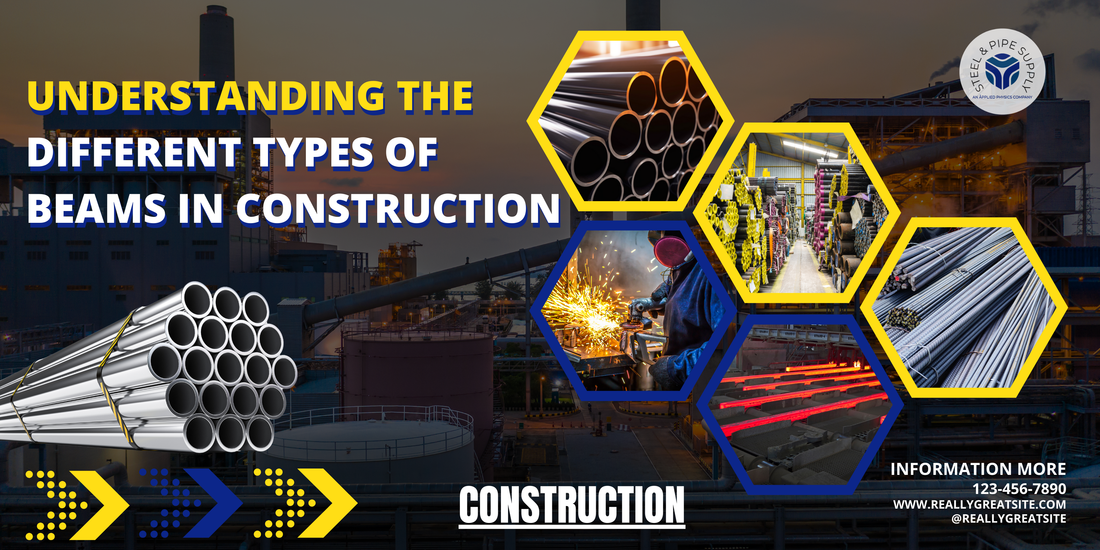
Understanding the Different Types of Beams in Construction
Share
Beams are an essential component in the construction of buildings and other structures. They are horizontal structural elements that support the weight of the structure above them, transferring the load to the vertical columns or walls. Beams are designed to resist bending and shear forces, and they come in a variety of shapes and sizes to accommodate different structural requirements.
In construction, beams are used to support floors, roofs, and ceilings, as well as to provide structural support for bridges, dams, and other large-scale infrastructure projects. There are several different types of beams used in construction, each with its own unique properties and advantages. Understanding the different types of beams and their uses is crucial for ensuring the structural integrity and safety of a building or structure.
In this article, we will explore the various types of beams used in construction, their structural properties, advantages and disadvantages, factors to consider when choosing beams for construction, common materials used for beams, and the importance of proper beam design in construction projects.
Key Takeaways
- Beams are essential structural elements in construction, providing support and stability to buildings and other structures.
- Different types of beams, such as I-beams, H-beams, and T-beams, have specific uses and advantages in construction projects.
- Understanding the structural properties of beams, including their strength, stiffness, and deflection, is crucial for proper beam design and selection.
- Factors to consider when choosing beams for construction include the load-bearing requirements, span length, and environmental conditions.
- Common materials used for beams in construction include steel, wood, and reinforced concrete, each with their own advantages and disadvantages.
Types of Beams and Their Uses
1. Steel Beams: Steel beams are one of the most common types of beams used in construction due to their high strength-to-weight ratio and durability. They are often used in large commercial and industrial buildings, as well as in bridges and other infrastructure projects.
Steel beams come in various shapes, including I-beams, H-beams, and W-beams, each with its own unique properties and uses. I-beams, for example, are commonly used in residential construction for supporting floor joists and roof rafters, while H-beams are often used in heavy-duty construction projects such as bridges and skyscrapers. 2.
Timber Beams: Timber beams, also known as wood beams, are another popular choice for construction due to their natural aesthetic appeal and versatility. They are commonly used in residential construction for supporting floors, roofs, and ceilings, as well as in the construction of bridges and other structures. Timber beams come in various sizes and shapes, including solid sawn beams, glulam beams, and engineered wood beams.
Solid sawn beams are made from a single piece of timber and are often used in traditional timber framing construction, while glulam beams are made from multiple layers of timber glued together to form a strong and durable beam.
Understanding the Structural Properties of Beams
1. Bending Strength: One of the most important structural properties of beams is their bending strength, which refers to their ability to resist bending under load. The bending strength of a beam is determined by its material properties, cross-sectional shape, and size.
For example, steel beams have a high bending strength due to the inherent strength of steel, while timber beams have a lower bending strength but can be reinforced with additional support members to increase their load-bearing capacity. 2. Shear Strength: Another important structural property of beams is their shear strength, which refers to their ability to resist shear forces that act parallel to the plane of the beam.
Shear strength is crucial for preventing the beam from failing due to lateral forces such as wind or seismic loads. Steel beams typically have a high shear strength due to the ductility and toughness of steel, while timber beams may require additional reinforcement to enhance their shear strength.
Advantages and Disadvantages of Different Beam Types
| Beam Type | Description |
|---|---|
| Wooden Beams | Commonly used in residential construction, relatively lightweight and easy to work with. |
| Steel Beams | Strong and durable, often used in commercial and industrial construction for large spans and heavy loads. |
| Concrete Beams | Highly durable and fire-resistant, commonly used in high-rise buildings and infrastructure projects. |
| Composite Beams | Combination of materials such as steel and concrete, offering a balance of strength and cost-effectiveness. |
1. Steel Beams: Steel beams offer several advantages in construction, including high strength-to-weight ratio, durability, and fire resistance. However, they can be expensive and require specialized equipment for installation.
Additionally, steel beams may be susceptible to corrosion if not properly protected. 2. Timber Beams: Timber beams are cost-effective, readily available, and have a natural aesthetic appeal.
However, they may be prone to rot, insect infestation, and fire damage if not properly treated and maintained.
Factors to Consider When Choosing Beams for Construction

When choosing beams for construction, several factors must be considered to ensure the structural integrity and safety of the building or structure. These factors include the load-bearing requirements, span length, environmental conditions, cost considerations, and aesthetic preferences. It is essential to work with a structural engineer or architect to determine the most suitable beam type for the specific requirements of the project.
Common Materials Used for Beams
Concrete Beams
Concrete is a versatile material that can be molded into various shapes and forms, making it an ideal choice for beams. It offers high compressive strength, durability, and resistance to natural disasters like earthquakes and hurricanes.
Composite Materials
Composite materials, made from a combination of wood and plastic, offer a unique set of properties. They are resistant to rot, decay, and insect damage, making them suitable for outdoor applications and areas prone to moisture.
Engineered Wood Products
Engineered wood products, such as laminated veneer lumber (LVL) and parallel strand lumber (PSL), are manufactured by layering wood fibers in specific directions. This process enhances their strength, stability, and resistance to warping, making them an excellent choice for load-bearing applications.
Importance of Proper Beam Design in Construction Projects
Proper beam design is crucial for ensuring the structural integrity and safety of construction projects. A well-designed beam system will distribute loads efficiently, minimize deflection and vibration, and withstand external forces such as wind and seismic loads. It is essential to work with experienced structural engineers and architects to develop a comprehensive beam design that meets the specific requirements of the project while adhering to building codes and regulations.
In conclusion, understanding the different types of beams used in construction is essential for ensuring the structural integrity and safety of buildings and other structures. By considering the various types of beams and their uses, structural properties, advantages and disadvantages, factors to consider when choosing beams for construction, common materials used for beams, and the importance of proper beam design in construction projects, builders and designers can make informed decisions that will result in safe and durable structures for years to come.
